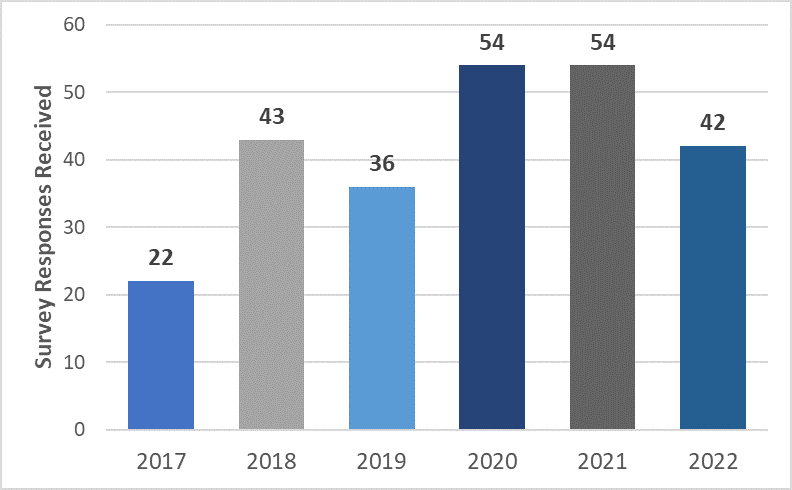
We have been listening
Improvements introduced after the partner survey 2022
The EFAS team highly appreciates all feedback we receive from the partners, since we constantly strive to improve the service as a whole and make it as useful as possible. Below is a list of some of the actions taken mainly after the EFAS annual survey for 2022 (conducted in January 2023), but also considering input and feedback sent to us via the feedback form, during partner trainings or at the EFAS annual meetings.
- Improve EFAS performance in small catchments: The recent major operational upgrade of EFAS, v5.0, was released on September 20th, 2023. EFAS v5.0 introduces several major changes to the system, first of all a significantly higher spatial resolution. EFAS v5.0 has a 1 arcmin / 0.0167 degrees resolution (~1.4km), as opposed to the 5-km resolution of all the previous EFAS versions. This, together with many other updates, for example a completely new suite of higher resolved (1 arcmin) static input maps and a calibration using more smaller stations and complemented by a parameter regionalization for ungauged catchments, significantly improved the overall performance in small basins. Currently, the criteria for issuing notifications are revisited and will be updated to likely include even smaller catchments (updates are expected in the upcoming months of 2024). In addition, the EFAS Flash floods product ERIC is now computed from simulated LISFLOOD surface runoff output (previously computed using a regression to translate precipitation and soil moisture into surface runoff).
- The EFAS map viewer interface has adequate content and functionalities, but it can be improved: Through an interactive booth at the Annual Meeting 2023, possible solutions were outlined together with the partners. The corresponding poster can be found via this link or at the bottom of the page of the Annual Meeting 2023. Implementation of collected ideas is currently ongoing and will be advertised once ready.
- The ability to access and download EFAS hydrological data should be better highlighted: Through a dedicated workshop at the Annual Meeting 2023, different ways of accessing data were presented and the 70 onsite and 30 online participants could ask questions.
- Lack of clarity about pre-tasking protocols: A workshop at the Annual Meeting 2023 was dedicated to the discussion of pre-tasking purpose, expected benefits, and protocols.
- Lack of clarity about how to provide feedback on EFAS notifications: CEMS DISS set-up a help-desk at the Annual Meeting to discuss difficulties and provide step-by-step tutorials. Furthermore, this presentation explained the importance of EFAS partners feedback on each notification. Clarifications and techincal support can be required at any time by sending a message via the feedback form.
- Improve EFAS in areas with reservoirs: Reservoirs in hydrological modelling are a challenging factor since they alter the hydrological regime and response to precipitation through specific decisions of the local reservoir management authorities, i.e. storing and releasing of water at different times compared to natural flow conditions. A necessary step to make improvements in those catchments from a modelling point of view is to gain knowledge on the reservoir characteristics and management plans. CEMS HYDRO started collecting reservoir data in 2023 (technical information on data collection are available here). This will in the long run allow the JRC and CEMS COMP to test improvements to LISFLOOD OS hydrological model. The work is in at concept stage, any development need to be thoroughly tested before operational implementation. Development and testing phase is a lengthy process. The EFAS partners will be informed about the progress in the EFAS AM 2024.

